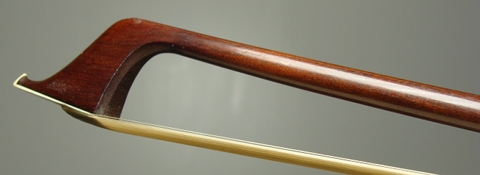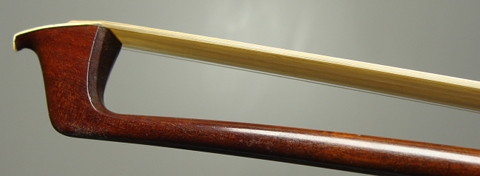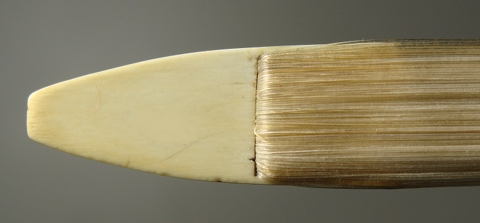ANDRE VIGNERON FILS; THE SELF-DISPOSSESSED
Superficially the Vignerons may appear as one of the many craftsmen families who worked in the French bowmaking world in the nineteenth century, where fathers trained the sons who would have carried on the profession. And, in a sense, it is like this for them as well, but in a unique way.

Cello bow André Vigneron "Fils" 1905/10
Born in Mirecourt on September 19, 1881 (the year of death of J.J Martin, who knows if everything is written), and carries out his training in his father's workshop.
The earliest works date back to the late '800 and stylistically they very close to those of his father.


The early years of the twentieth century are characterized by an intense collaboration between father and son. Between 1900 and 1905, many bows are produced by their cooperation. But although the relationship was excellent, André, is gradually seduced by new stylistic tastes and new mechanics, as proposed by the various Sartory or Fetique.


Even if he maintains, for example, an important bevel , more characteristic of the ancient period that of the modern one , the geometries of the heads, especially the violin ones , become finer and with a triangular profile.
But the main reason for the stylistic change is to be found in the different mechanics used. Like his father, a pupil of Martin, he is the last using old curves, the son is the one that has abandoned them for more than fifty years.



After his father's death, on June 13, 1905, he takes over the laboratory and business contacts, still using his father's old brand to stamp his bows.

During the First World War he interrupted his work, even if no one knows if he played an active role in it.


In 1920 he returned to his work and begins to build his small empire, hiring Louis Piernot as an assistant and Auguste Husson as a worker.
He is also busy in the business field , creating a bow that is an inch longer than normal, in collaboration with the same teacher with whom his father worked , Lucien Capet, who also gives his name to this particular model. Naturally this gimmick, like his father's one , are just mere commercial transactions, and not real contributions to the bow development .

Unfortunately, the untimely death in January 1924 at only 43 years, puts an end to the dreams of glory of a craftsman, who really deserved something more.
His bows are very well built. They work well mechanically while, stylistically, they always find an alternative and non-common route to the prevailing taste of the era .
Truly one of the best of his time.

So long.
Paolo
|